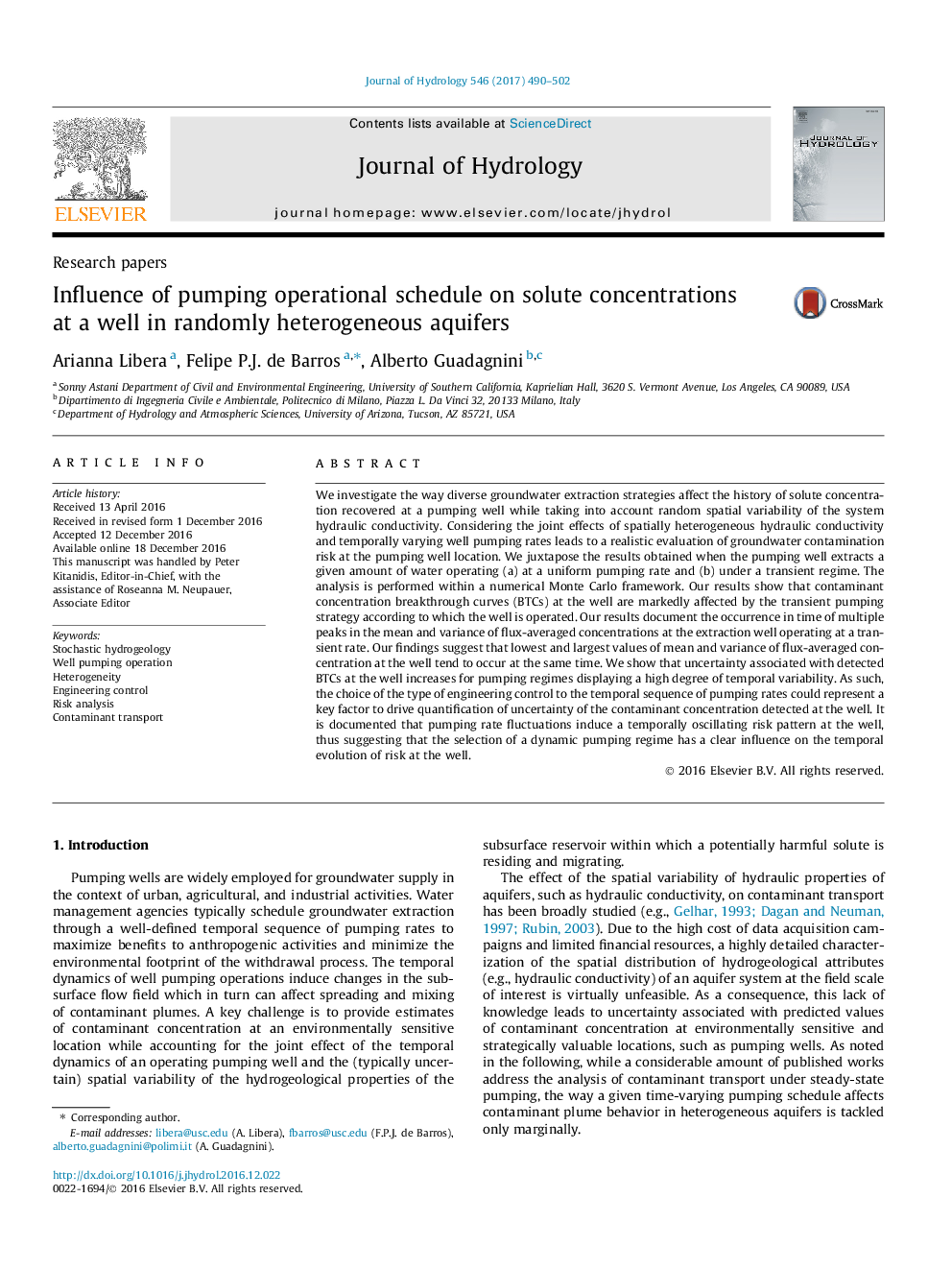| کد مقاله | کد نشریه | سال انتشار | مقاله انگلیسی | نسخه تمام متن |
|---|---|---|---|---|
| 5771313 | 1629908 | 2017 | 13 صفحه PDF | دانلود رایگان |

- Significance of temporally variable well pumping rates on the BTC.
- Impact of the effects of engineering control and heterogeneity on the BTC.
- Quantification of risk as a function of the pumping operational schedule.
- Engineering control should be accounted for in probabilistic risk analysis.
- Interplay between advective, dispersive and pumping operation time scales in driving dilution.
We investigate the way diverse groundwater extraction strategies affect the history of solute concentration recovered at a pumping well while taking into account random spatial variability of the system hydraulic conductivity. Considering the joint effects of spatially heterogeneous hydraulic conductivity and temporally varying well pumping rates leads to a realistic evaluation of groundwater contamination risk at the pumping well location. We juxtapose the results obtained when the pumping well extracts a given amount of water operating (a) at a uniform pumping rate and (b) under a transient regime. The analysis is performed within a numerical Monte Carlo framework. Our results show that contaminant concentration breakthrough curves (BTCs) at the well are markedly affected by the transient pumping strategy according to which the well is operated. Our results document the occurrence in time of multiple peaks in the mean and variance of flux-averaged concentrations at the extraction well operating at a transient rate. Our findings suggest that lowest and largest values of mean and variance of flux-averaged concentration at the well tend to occur at the same time. We show that uncertainty associated with detected BTCs at the well increases for pumping regimes displaying a high degree of temporal variability. As such, the choice of the type of engineering control to the temporal sequence of pumping rates could represent a key factor to drive quantification of uncertainty of the contaminant concentration detected at the well. It is documented that pumping rate fluctuations induce a temporally oscillating risk pattern at the well, thus suggesting that the selection of a dynamic pumping regime has a clear influence on the temporal evolution of risk at the well.
Journal: Journal of Hydrology - Volume 546, March 2017, Pages 490-502